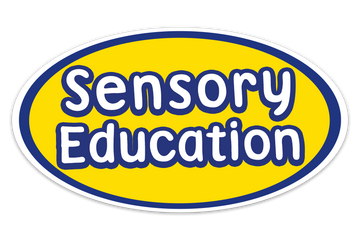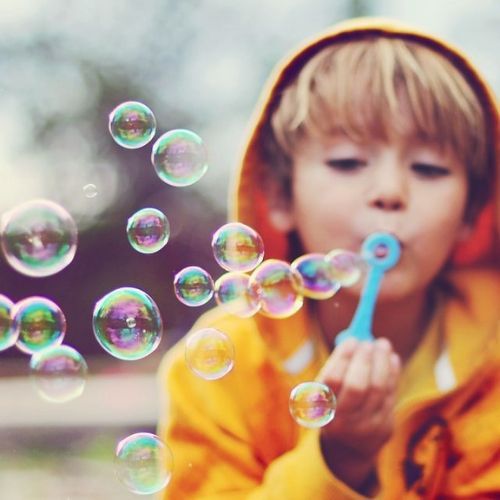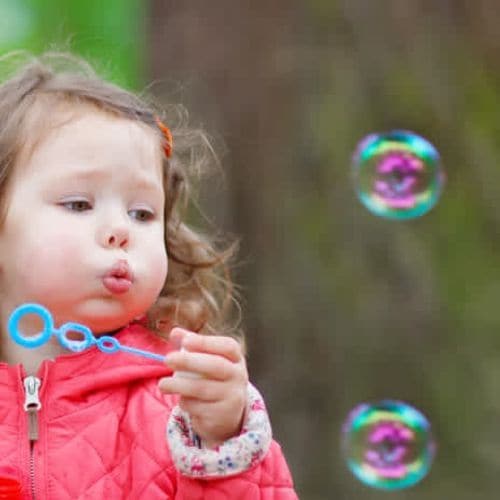Description
Use these Super Bubble tubs to create a world of sensory wonder on a budget.
They are a great multi-sensory pocket money item for all ages! Sold as single tubs.
Filled with safe and non toxic bubble fluid, and supplied with a wand.
Some great ideas for bubble play:
Gross motor movement, balance and strength development Bubbles are a great distraction during tummy time , and every bit of tummy time helps with your little one’s development.
When in this position, bubbles also encourage your baby to turn its head up and down and to both sides, which are movements that are needed to help control primitive reflexes.
This is so important for future smooth, coordinated movement and learning.
Once your little one gets stronger on his tummy, he will start to reach out for the bubbles.
There is a ton of muscle strengthening and balance development going on as he attempts this.
Bubbles provide motivation to move .
As your developing baby starts to crawl, creep and cruise he will love chasing after bubbles.
Crawling over, under or through obstacles to get to bubbles is a great way to encourage body and space awareness and problem-solving for your baby.
When your little one is learning to stand and walk independently, bubbles provide many opportunities to work on developing balance reactions as he moves after the bubbles.
There is a lot of starting, stopping, changing direction, shifting weight, reaching up and squatting up and down.
What an awesome workout! Fine motor development Once your little one is able to grasp the wand, he will also want to help create the magic of bubbles.
Warning - it will get messy, but practice makes perfect.
Being able to grasp, hold and manipulate the wand in and out of the container helps the development of fine motor control, which is so important for the development of the correct pencil grip, writing and working with tools in the future.
Let both hands have a turn.
Hand-eye and foot-eye coordination Popping bubbles, be it with the whole hand, two hands, a finger, a foot, a toe all helps the development of hand-eye or foot-eye coordination.
These early movement experiences form the basic building blocks of catching, hitting, throwing and kicking skills involved in ball sports.
Oral Motor skills Help your toddler to learn how to blow the bubbles themselves.
This activity is usually learned between the ages of 2 and 3 years.
Blowing is a fantastic way to develop the muscles of the jaw and mouth and is used fairly often in therapy to help with kids that drool or dribble a lot, as it increases the muscle tone around the mouth and helps young children to be able to elicit different sounds of speech.
It is not as easy as it seems and may take a while for them to figure it all out.
Sucking in, instead of blowing out, is quite a common starting point, but they will eventually get the hang of it.
Body awareness Knowing the names of body parts, where they are and how they can move, is an essential foundation building block for later learning, and toddlers between the ages of 1 and 2 are learning to point to different parts of the body.
Bubbles provide endless opportunity to talk and learn about body parts: Look, the bubble is near your hand; Stomp on it with your foot; Reach your arms up and try to touch the bubbles;
Can you pop one with your nose? Spatial awareness and directionality Developing an awareness of how their body can move in space and understanding directional concepts develops alongside body awareness.
Bubble play can encourage the understanding of concepts such as up / down, over / under, in front / behind, next to, above / below.
Social and communication skills Bubbles are a wonderful social tool for groups, like siblings, baby friends or a baby/toddler stimulation class.
In groups, children further develop body and space awareness as they learn to move around and pop the bubbles without bumping into each other.
Whether actively interacting or simply lying down and watching them float around, bubbles are a magnificent and magical way to help development and enjoy the moment.
When you are feeling tense or anxious, the wonderful thing about blowing bubbles for your child is that you too can benefit from blowing bubbles.
Taking deep breaths and steadying the flow and direction of your outward breath is a wonderful calming tool, along with the visual effect of watching floaty bubbles drifting slowly through the air.
It’s a win-win situation for bubble blower and bubble popper alike.





